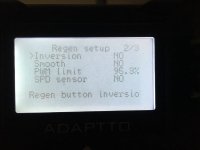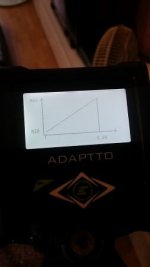Now I need your help.
I brought a used Mini-E for my girlfriend's bike from a forum member. It arrived but unfortunately does not work and I cannot return it.
When I connect the display to the controller and hook it up to my power supply it does not turn on and the display stays black. As it is likely to have no warranty, I will try and fix it myself if I am able to.
So dear adaptto geeks, please give me a tip what can cause the controller not to start.
Things I measured:
1) Opened the display and measured all three wires vs. ground: each 0V. so no voltage gets to the display.
2) Opened the controller and measured all three wires vs. ground at the pcb connection where the cable to the display is attached. Again 0V. so no voltage gets to the connectors on the pcb

3) The controller has ON/OFF functionality, so I measured the voltage beween both wires when they are not connected. The result is the voltage of my power supply which I set between 60 and 80v. If I connect both wires there is a spark, which is the same for my working controller, so I think this is the right reaction.
4) Measured the continuity of all of the ribbon cable wires as this was the most likely thing to get damaged by the transport. But they are all fine.
The PCB looks good, too. So do all the capacitors. There are visually no black spots or disconnected routes on the pcb. The previous owner must have replaced R113 as you can see soldering flux around it. But the resistor is okay. R33 also lookes a bit like someone changed it, too. It says "123" on top and has the related 12kOhm, though.
Is there something like a fuse for the internal logic of the controller? It seems that the hole logic is suspended or the step down converter to 5v is damaged. Shall I connect external 5V to the 5V connector? I'm a bit worried about this, to be honest.
What happens if the controller was connected to + and - in reverse? What is the most likely component to die?
Any hint where to start my error search or where to find more Information about the schematic is highly appreciated! If you need more information, please let me know. I even have an oscilloscope here, if this helps.





